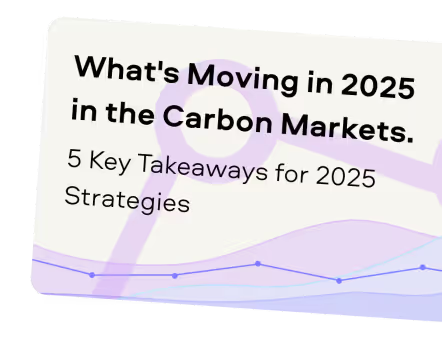“Over the years we’ve invested significantly in our field data team - focusing on producing trusted ratings. While this ensures the accuracy of our Ratings, it doesn’t allow the scale across the thousands of projects that buyers are considering.”
For more information on carbon credit procurement trends, read our "Key Takeaways for 2025" article. We share five, data-backed tips to improve your procurement strategy.

One more thing: Connect to Supply customers also get access to the rest of Sylvera's tools. That means you can easily see project ratings and evaluate an individual project's strengths, procure quality carbon credits, and even monitor project activity (particularly if you’ve invested at the pre-issuance stage.)
Book a free demo of Sylvera to see our platform's procurement and reporting features in action.
In June 2021 we published a report detailing findings from our proprietary research into voluntary carbon markets (VCMs). Based on our analysis of market dynamics, we stated that VCMs were experiencing significant upward price pressure.
This proved to be correct.
During the second half of 2021, we saw exactly this trend of increasing carbon credit play out. In November 2021, the value for the 2021 voluntary carbon credit market breached $1billion. Headlines from leading publications including BloombergNEF, Financial Times, S&P Global and Ecosystem Marketplace confirmed that our prediction of rapid market growth had come to pass.
This year, we ran the numbers again. What did we learn?
Download the report here find out.
We answer the following questions:
- Why are voluntary carbon credit prices increasing?
- What will the impact of higher carbon credit prices be?
- What are the key trends impacting voluntary carbon markets in 2022?
Data analysis was carried out by Oliver Gough, Strategy Lead, and insights were provided by Oliver Gough, Ben Rattenbury, VP of Policy and Patrick Fitzgerald, VP of Commercial Development.









.png)





